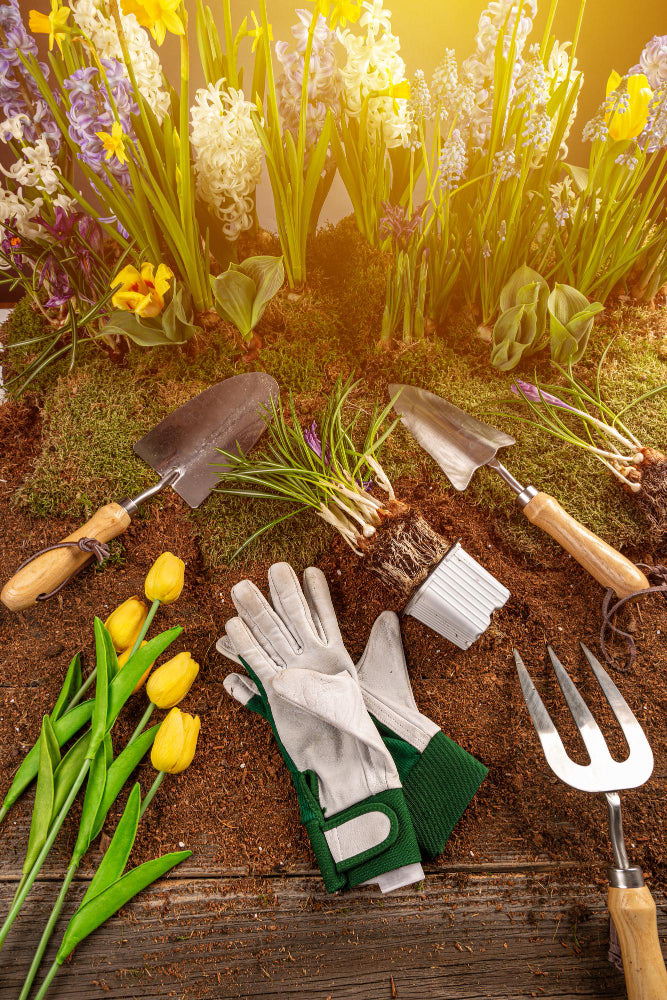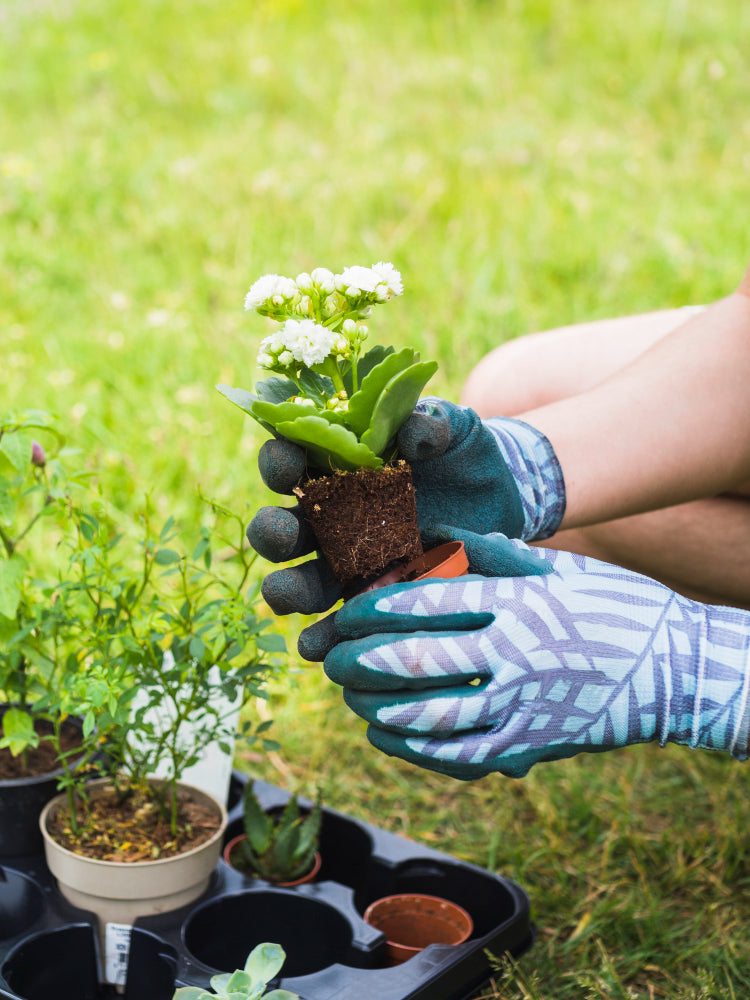Preparing the garden for spring is a task full of challenges, but also extremely satisfying, which will provide your green corner with a stunning appearance and excellent condition. Spring in the garden is the perfect time to plan work that will help you enjoy the beauty and charm of your garden in spring.
Our article is a comprehensive guide that will help you prepare your garden for spring so that it becomes a place of relaxation and inspiration.
Tidying up the area after winter

Tidying up the area after winter is a key step in preparing your garden for spring . We present you the necessary actions that will help you bring your garden back to life:
-
Waste disposal :
- Remove dry leaves, branches and other debris from the lawn and between plants.
- Check your garden tools for corrosion and clean them.
- Compost green waste to create valuable fertilizer instead of burning it.
-
Preparing the lawn and plants :
- If unevenness appears on the lawn, it is worth rolling it. Unevenness can lead to the deterioration of your lawn because the roots may not be properly attached to the soil.
- Gradually remove winter coverings from trees, shrubs and evergreens, avoiding direct sunlight, which can shock the plants. Be sure to do this in late March or early April.
- Prune trees and shrubs before buds begin to grow.
-
Repair and care :
- Remove weeds and prevent them from spreading.
- Repair any damaged garden infrastructure, such as paths or pergolas.
- Clean garden ponds by removing leaves, branches and other debris.
- Raking the lawn will help remove dead grass and other debris.
Remember that regular cleaning after winter is the foundation on which you build the beauty and health of your garden for the coming months. Thanks to these tips, spring in the garden will not only be a time of hard work, but also an opportunity to enjoy the first rays of sunlight and prepare the greenery for the new season.
Pruning and caring for plants in spring
Pruning and caring for plants in spring are key activities that will ensure healthy growth and abundant flowering in your garden. Here are some tips on how to properly carry out this work:
-
Pruning trees and shrubs :
- Remove dead, old or weak branches to prevent disease and encourage new growth.
- In the case of fruit trees, remove young shoots to prevent excessive crowding and to ensure adequate sunlight exposure for the fruit.
- Prune ornamental shrubs when the temperature is between +5°C and +10°C, and fruit trees at the end of winter, when the risk of frost has passed.
-
Pest and disease control :
- Use specific treatments only when other methods fail.
- Whitewashing tree trunks can prevent fungal growth and delay the start of the growing season.
- Check your plants regularly for pests and diseases and consider using organic or chemical plant protection products.
-
Care after pruning :
- After pruning, feed the plants with nutrient-rich fertilizer or compost.
- Use sharp, clean pruning tools appropriate to the size of the branch.
- For thin branches, make the cut 0.5 cm above the bud, at a slight angle, so that water can flow freely from the wound.
Remember that each plant has its own specific pruning requirements, so it is important to understand the needs of each plant before you begin. Regular pruning and care are the foundation of a healthy and lush garden that will please the eye throughout the season.
Soil preparation and spring planting planning

Preparing the soil and planning plantings in spring is a stage that will definitely influence subsequent abundant harvests and lushness of plants. Here are some key steps to help you prepare your garden for spring:
-
Soil preparation :
- Start by digging the soil about 10 cm deep and wait about 7 days for the soil to stabilize.
- Add compost or manure to enrich the soil with nutrients and improve its structure. Remember that different plants require different types of fertilizers.
- To improve soil permeability and structure, add sand to heavy clay or organic compost to sandy soil.
-
Planting planning :
- Choose the right moment to plant new trees and shrubs, preferably at the beginning of spring, when the ground is not frozen.
- For rose lovers, the optimal planting time is the second half of April.
- Remember to properly arrange the plants to provide them with space to grow and proper air circulation.
-
Care after planting :
- After planting, water the plants thoroughly, especially during dry periods.
- Apply mulch around plants to retain moisture, reduce weed growth and regulate soil temperature.
- Regular removal of weeds and additional fertilization, depending on the needs of selected plants, will provide them with the best conditions for growth.
Remember that taking care of the proper preparation of the soil and carefully planning plantings is an investment that will result in a beautiful and healthy garden, ready to welcome spring in full force.
Care of furniture and wooden elements in the garden
Spring care of furniture and wooden elements in the garden requires special attention to ensure their durability and aesthetic appearance. Here are some steps to help you with this care:
-
Renovation and cleaning :
- Thoroughly clean garden furniture and wooden elements using a soft brush and mild detergent to remove dirt and plant debris.
- Use sandpaper to smooth the surface and remove difficult stains.
-
Wood protection :
- Choose the appropriate impregnation depending on the type of wood:
- Oil impregnations for protection against moisture and dirt.
- Waterproofing for protection against water damage.
- Synthetic resin impregnation for protection against water, decay and insects.
- Apply the selected preparation according to the instructions to ensure maximum protection.
- Choose the appropriate impregnation depending on the type of wood:
-
Storage and maintenance :
- Cover your garden furniture with appropriate winter covers to protect it from adverse weather conditions.
- Regularly check the condition of the furniture and make minor repairs, e.g. using a scratch corrector for minor mechanical damage.
- Avoid using strong chemicals that may damage the wood structure.
Remember that regular care and proper storage of garden furniture not only extends its life, but also allows you to enjoy its beauty throughout the season.

